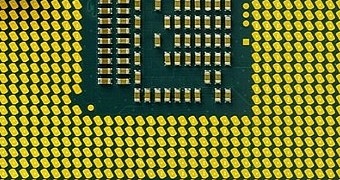Hard drives, the prime type of magnetic storage devices, have been seeing some flak lately for being slow and bulky compared to solid state drives. However, they still maintain the capacity advantage, and the basis of their technology might see a rebound soon.
Sure, the application may differ, but in the end, it's still magnetic forces that a team from the University of Sheffield's Faculty of Engineering is focusing on.
Led by Dr. Tom Hayward, the team believes that magnetic materials could become the basis for a computer's central processing unit, not just the storage space.
Admittedly, we've heard of these and other “wonder CPU technologies” before, and nothing really came of them, at least not yet.
This time, though, there seems to be something feasible and convenient about the theories put forward by the researchers.
Magnetic tornadoes to help build new computers
To be more specific, they will be what future PCs are made of if the researchers have their way, as the elements can not only store data (without needing constant power) but can also allow for the creation of logic gates.
Logic gates are the fundamental parts of a central processing unit. Being open or closed translates into 1 and 0 in binary software, and from there, every operation we can carry out on a computer is enabled.
Magnetic wires with a thickness of a hundredth of a human hair have been discovered to automatically form so-called tornadoes, or magnetic vortex domain walls, if you want the technical term.
These vortices can be used to represent 0 when they turn clockwise and 1 when they spin the other way. Thus, binary data can be encoded.
That done, the vortices can flow through wires using carefully defined features in said wires, finally making them double as logic gates.
In layman’s terms, the scientists have created a power-free (or nearly power-free) alternative to today's central processing units. Not a bad showing at all.
The ETA for practical applications
That's hard to say, since the team hasn't even built an experimental prototype yet. All they've done are virtual simulations. That means that it can take decades for something usable, meaning that Intel, AMD, ARM and VIA have more than enough time left to run conventional architectures and Moore's Law into the ground.
In fact, we wouldn't be surprised if these companies license the technology or immediately take over whatever company the research team sets up, assuming they take that route once their invention becomes viable.

 14 DAY TRIAL //
14 DAY TRIAL //